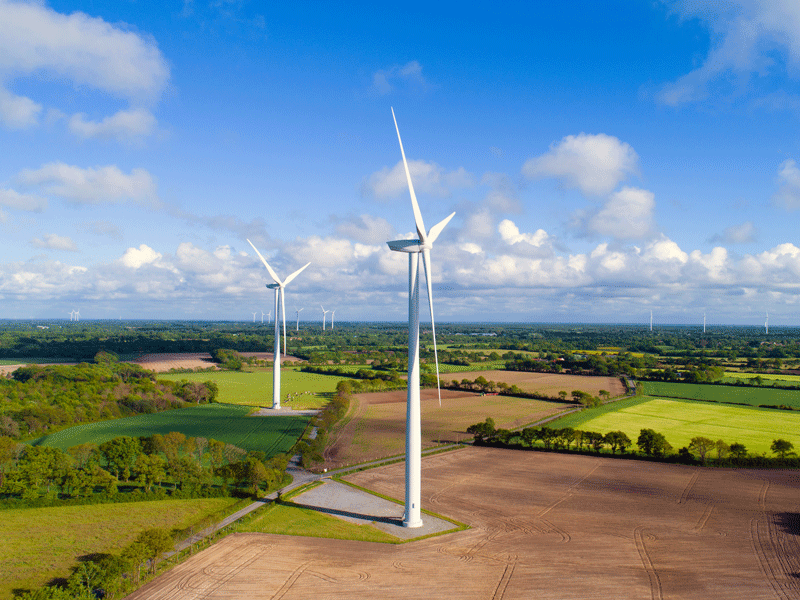Top 5 innovative alternatives to fossil fuel
Solar panels and wind turbines create the vast majority of renewable energy, but further breakthroughs are needed for the energy sector to cut its ties with fossil fuel once and for all

Wind farms and solar initiatives have created huge amounts of renewable energy in recent years, but more alternatives are still badly required to meet the world's needs
Despite huge strides made by green energy in recent years, coal, oil and gas still play a huge role in the global energy system. Fossil fuels transformed the world at the time of the Industrial Revolution, but the negative effects of carbon dioxide (CO2) emissions and other greenhouse gases can no longer be tolerated.
Fossil fuels transformed the world, but the negative effects of CO2 emissions and other greenhouse gases can no longer be tolerated
In 2016, a majority of world leaders united behind a mission to take a bolder stance against the threat of climate change with the Paris agreement. Under this pact, each country is tasked with reducing emissions in order to keep the rise in global average temperatures bellow two degrees Celsius.
The clock is ticking, and if this goal is to be met, more innovative clean energy alternatives must be developed. Here, The New Economy looks at some of the most interesting forms of green energy in development.
Elephant Grass
Biomass energy was the fuel of choice for centuries before coal, oil and gas became more readily available. Today, as CO2 emissions wreak havoc on our environment, it is once more becoming a serious contender in the global energy mix.
Biomass encompasses any organic material from plants or animals, but it takes the form of wood most often. Based in Sweden, clean-tech start-up NextFuel has pioneered a method using an alternative to wood pellets. Using elephant grass, NextFuel produces a CO2-negative alternative to fossil fuel that can be used directly in the existing energy infrastructure.
Elephant grass is a specialised plant that can grow up to four metres in just 100 days, producing several crops to harvest each year. Once the grass has been harvested, NextFuel’s technology requires very little energy to transform it into a briquette in its factory. As less CO2 is released into the atmosphere when the fuel is burned than was captured from the atmosphere a few months earlier when the grass was growing, the whole carbon cycle becomes negative on a yearly basis.
Hydrogen fuel cells
Hydrogen is one of the earth’s most abundant elements, and like biomass energy its use in the power sector is nothing new, but exciting new developments have put it back in the spotlight. Hydrogen fuel cells can produce clean energy for a variety of different sources. They can be used in the transport sector in a similar way to lithium-ion batteries, but unlike batteries they do not run down or need recharging.
Uptake in hydrogen technology has been slow due to its cost, but on September 17, Germany began running the world’s first passenger trains powered by hydrogen fuel cells. A number of other European countries are also looking into hydrogen trains, and in September Reuters reported that European Union energy ministers had agreed to work together to increase hydrogen’s prospects in the transport and power sectors.
Solar paint
Solar panels are one of the most common renewable alternatives to fossil fuels, but what if you could generate energy from the sun while sidestepping the environmental impact of manufacturing the panels?
Researchers from the Royal Melbourne Institute of Technology in Australia may have found an answer after a team developed a paint that can be used to generate energy. By combining the titanium oxide found in many wall paints with synthetic molybdenum-sulphide, the material can absorb solar energy as well as moisture from the surrounding air.
“[The] simple addition of the new material can convert a brick wall into energy harvesting and fuel production real estate,” Lead researcher Dr Torben Daeneke said when the findings were announced in 2017.
Wave energy
Harnessing the power generated by the ocean’s waves seems like a simple idea. Unfortunately, it is much more difficult in practice. For years, researchers have worked to create an optimal design, but a commercial-scale wave power project has yet to come to fruition.
In Portugal, a small-scale ‘wave snake’ scheme operated off the coast in 2008 and 2009, but after the Scottish company that produced the technology fell into administration, the intellectual property was transferred to Wave Energy Scotland, a governmental body.
Work on wave energy is still progressing. In February, US engineering giant Lockheed Martin announced plans to develop the world’s largest wave energy project to date – a 62.5 MW installation off the coast of Victoria, Australia. The EU is also working on a project involving Wave Energy Scotland to create open source software for wave and tidal energy systems in the hopes of making the industry more attractive to private investors.
Whisky
Scotland has been producing whisky for centuries, and over the years distilleries have found ways to deal with the waste that is produced as a by-product, often selling it to farmers as cattle feed. Now, the industry is looking for a more innovative way to use the four million tonnes of waste it produces each year. In 2015, the Green Alliance predicted whisky waste by-products could be a £140m ($184m) market.
Now, some distilleries are beginning to use their own waste to fuel their operations through anaerobic digester plants that create bio-gas that is processed into steam energy. In its first year of operation, Glendullan distillery, owned by drinks giant Diageo, generated 6,000 MW hours of thermal energy, reducing fossil fuel demand by a quarter. Whisky by-products can also be used to produce heat and fuel cars.













